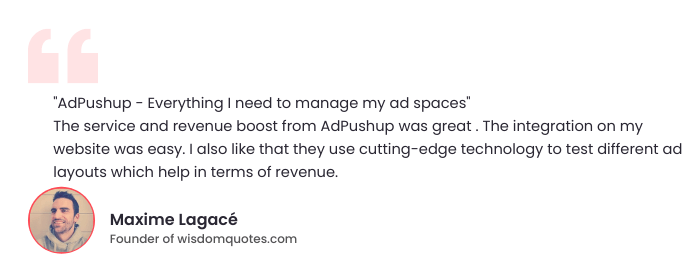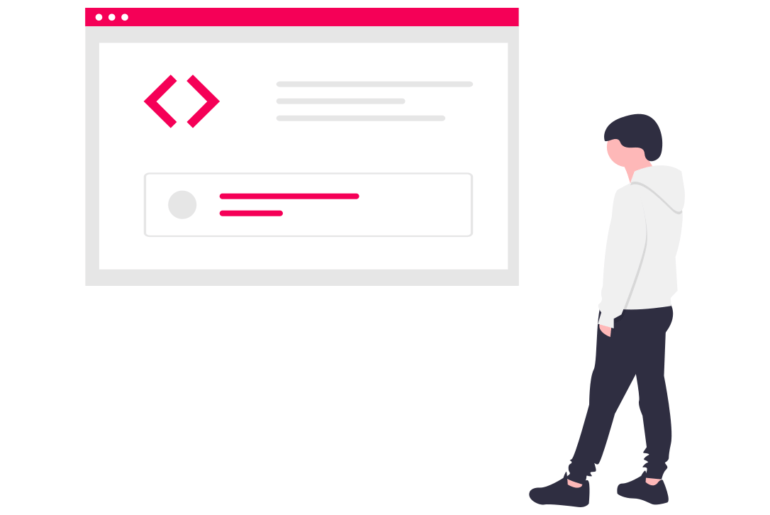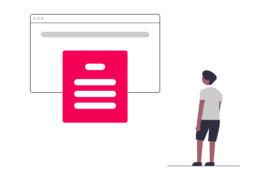Wondering what exactly is prebid.js and how is it different from prebid server? You have come to the right place. Our guide on Prebid.js discusses its benefits, drawbacks, how it works, and a lot more.
Ever since Prebid has been introduced in the ad tech industry, it has become mainstay for many publishers. However, industry people still have a hard time differentiating between Prebid.js, prebid wrapper, and header bidding wrapper.
For a quick recap, back in 2015, AppNexus designed a client-side wrapper, Prebid.js. After partnering with the Rubicon Project in 2017, they, together,
That being said, let’s now dive right into heart of the matter and discuss what is prebid.js.
What is Prebid.js?
Popularly known as the prebid wrapper, Prebid.js is the most well-known Open Source header bidding wrapper. A good analogy to understand Prebid.js is the WordPress equivalent of header bidding.
Just like WordPress, Prebid is open source and makes header bidding free to use and customizable according to publishers’ requirements.
Prebid.org defines Prebid.js as, “A feature-rich header bidding platform for the web, including more than 150 demand sources and 15 analytics adapters supporting currency conversion, GDPR, common ID systems, and multiple ad servers.”
Prebid.js enables publishers to carry out header bidding on their property (site or app). It also allows publishers to set up line items, manage them effectively, make use of asynchronous ad calls and do all this without the need of developing a custom solution.
How Does Prebid.js Work?

Prebid.js takes only a few steps to carry out the header bidding auction. Here are those steps:
- As soon as an impression becomes available, Prebid.js library initiates and starts fetching the bids and creatives from the respective ad exchanges, SSPs and advertisers.
- These bids and creatives are then forwarded to
ad server. - The ad server then uses predetermined logic including (but not limited to) floor price, ad type and format to compare these bids and stores them as line items by keeping the auction time under timeout set by the publisher.
- After comparison, if the ad server finds a qualifying bid, it sends a signal to Prebid.js library along with the details of the winning bid and the placement of the winning creative on the webpage.
Benefits of Using Prebid Wrapper

Faster Auctions and Improved User Experience
As claimed by Prebid.org, header bidding auctions run faster using Prebid.js wrapper, which results in decreasing the demand partner response time and ends up providing a better user experience.
Flexibility Across Channels
Furthermore, the technology is quite flexible, works for both mobile and desktop channels including display, native, and video ad types.
Enhanced Analytics
The system provides analytics to understand what’s working and what (non-performing) partners to exclude from the wrapper.
Supportive Community
Moreover, Prebid has its own community of working professionals and experts who are continuously working to improve the product and provide assistance to other users.
Increased Profits for Publishers
Publishers benefit from Prebid.js by optimizing ad serving, ultimately increasing profits. Prebid.js enhances ad serving efficiency to maximize revenue streams for publishers.
Are there any Drawbacks?
Complexity of Setup and Maintenance
While Prebid.js is free and open-source, setting up, maintaining, and running header bidding using it may not be straightforward for all publishers.
Need for Ad Ops Expertise
Without a dedicated ad ops team, publishers may require assistance with setting up, managing, and optimizing header bidding implementations.
Impact on Site Loading Speed
The process of loading scripts for header bidding auctions can cause delays in page loading, potentially impacting user experience due to increased page latency.
Not Suitable for Every Publisher
Due to the complexity involved, header bidding with Prebid.js may not be suitable for every publisher. It’s essential to evaluate factors such as long-term business goals and user experience before implementation.
Testing for Suitability
Considering the various factors, it’s advisable to test Prebid.js to determine its suitability and alignment with both business goals and user experience objectives.
Now that you what is prebid.js, let’s npw understand what makes it different from prebid server.
Difference between Prebod.js and Prebid Server
For a quick recap, Prebid.js is a powerful, open-source Header Bidding wrapper that allows a publisher to monetize their websites by connecting them to multiple demand partners who bid on ad space.
It supports over 200 demand partners and is used by thousands of websites worldwide. Prebid.js is also a client-side Header Bidding solution, which means that the auction code embedded on the publishers’ website gets executed on the user’s browser.
Whereas Prebid Server is a server-side solution for running real-time ad auctions. It is completely equipped to sell ad opportunities through server-side header bidding, including bidding integrations, privacy controls, currency conversions, price floors, analytics, and more.
But the key difference between the two is that Prebid Server brings the Header Bidding solution to systems that don’t support JavaScript. This means, whole ad serving procedure will take place on a server or remote computer.
On the other hand, Prebid.js is the leading solution for Header Bidding which is a JavaScript-based solution for websites online.
Prebid.js only works on browser-based websites, while mobile apps, AMP websites, long-form video, and Digital out-of-home require Prebid Server to run Header Bidding Solution and maximize revenue.
| Prebid.js | Prebid Server |
| Is the leading solution for JavaScript based Header Bidding | Provides Header Bidding solution to environments that don’t support JavaScript |
| Over 200 demand partners | Over 150 demand partners |
| Only works on browser-based websites | Works on mobile apps, AMP websites, and more |
| Client-side HB leads to better cookie match rates and higher revenue | Sever-side HB allows the ads to load quicker and improve overall user experience |
| Limited bidder list available | Publishers can add as many bidders as they like |
| Supports native, video, display, and other creative ads | Also support native, video, display, and other creative ads |
What to choose – Prebid.js or Prebid Server?
The choice between Prebid.js and Prebid Server completely depends on the publisher’s use case scenario.
With Prebid.js, multiple requests are sent out to the ad server for the auction, which lowers the page load time and increases latency. However, it is a much easier and faster setup with a higher cookie-match rate, making it an optimal choice for higher revenue opportunities.
Whereas, with Prebid Server, only one call is made for the auction to take place. And with the freedom to add as many ad partners as a publisher likes without impacting the user experience, it helps scale up the demand for an ad slot/impression.
So, it completely depends on you, the publishers, on which setup will work best for your website.
Prebid or Managed Solution – which is better?
Prebid is an open-source platform managed by the global community, making it a cost-effective option, especially fit for smaller publishers.
While a Managed solution is one where Prebid or not, the monetization practices for the website are taken care of by ad networks or SSPs. This works best for publishers who wish to purely focus on the content published on their website and not worry about the monetization aspect of it.
Though it is a very lucrative option that saves publishers time and energy, the main drawback here is that the publisher holds limited or no control over the code that is run on their website by the third-party vendor. This is likely to impact the latency of the webpages, impacting the user experience.
But, if you choose Prebid Solution, the publisher needs to be on top of it, either themselves or have a dedicated team working on it every day.
Therefore, it once again depends on the needs and use cases of the publisher that determine which solution is better for the website.
Frequently Asked Questions: Prebid.js
Prebid.js is an open-source, JavaScript-based Header Bidding wrapper that connects publishers to multiple demand partners to bid on a ad space. It supports creative ads like native ads, video ads, and more improving the overall user experience.
Prebid.js is a core feature of the Prebid ecosystem that supports over 200 demand partners.
The code for Prebid.js is embedded on the publisher’s website in executed client-side when the page loads on the user’s browser. The tag makes a call to the ad exchange to gather bids on the ad inventory from all the demand partners. After which, JavaScript fetches the highest paying bid and publishes it on the website.
Prebid is not an ad exchange per se. Instead, it’s an open-source header bidding solution. It allows publishers to conduct real-time auctions for their ad inventory among multiple demand sources, including ad exchanges.
Think of Prebid as a facilitator or mediator between publishers and ad exchanges. It integrates with various demand partners such as ad networks, SSPs (Supply Side Platforms), DSPs (Demand Side Platforms), and ad exchanges.
Some of the main differences between Prebid.js and Prebid Server are are follows:
– Prebid.js is a JavaScript-based Header Bidding wrapper, while Prebid Server provides Header Bidding solution to non-JavaScript using environments.
– Prebid.js runs a client-side Header Bidding that can earn a higher ad revenue, while Prebid Server runs a server-side auction that leader to quicker page loading and better user experience.
– Prebid.js can only call limited demand partners to bet on an ad impression, whereas Prebid Server can add as many demand partners as needed without any impact on page load or user experience.
– Prebid.js is much easier to setup with high cookie-match opportunities, while Prebid Server avoids latency with quicker page loads.
– Prebid.js works best on browser-based websites, while Prebid Server is best suited for mobile apps, AMP websites, and such.
Prebid.js is free to use. However, if you are not equipped with an ad ops team having required technical knowledge to install and setup Prebid.js, then you might need to pay engineers to do that for you.
Yes, Prebid has a server-side header bidding solution, called Prebid server. As the name suggests, the heavy lifting of the auction will be conducted on server-side, hence, improving page load time and user experience.
The answer to this will vary from publisher to publisher. Thus running A/B tests and collecting real data from pages running Prebid to get an answer would be the best path to take. More bidders might sound like a good idea to increase the profit (in theory, it might actually increase profit), however, it would increase page latency too, which ultimately decreases revenue.
No, Prebid does not provide an interface to track such details yet. Although, publishers can integrate Google Analytics with Prebid to get header bidding stats, however, there is no guarantee of these stats being accurate.
As Prebid is open source, there is no official support. But you can join various resourceful communities (including Slack and Reddit) to get answers to your queries.
Prebid is not an ad exchange per se. Instead, it’s an open-source header bidding solution. It allows publishers to conduct real-time auctions for their ad inventory among multiple demand sources, including ad exchanges.
Think of Prebid as a facilitator or mediator between publishers and ad exchanges. It integrates with various demand partners such as ad networks, SSPs (Supply Side Platforms), DSPs (Demand Side Platforms), and ad exchanges.

Deepak has a keen eye for detail and a deep understanding of the ad tech landscape. Whether it’s through in-depth articles, thought-provoking insights, or compelling storytelling, he’s dedicated to helping people navigate the complex world of ad tech with the simplicity of his words.









1 Comment
thankyou for this info